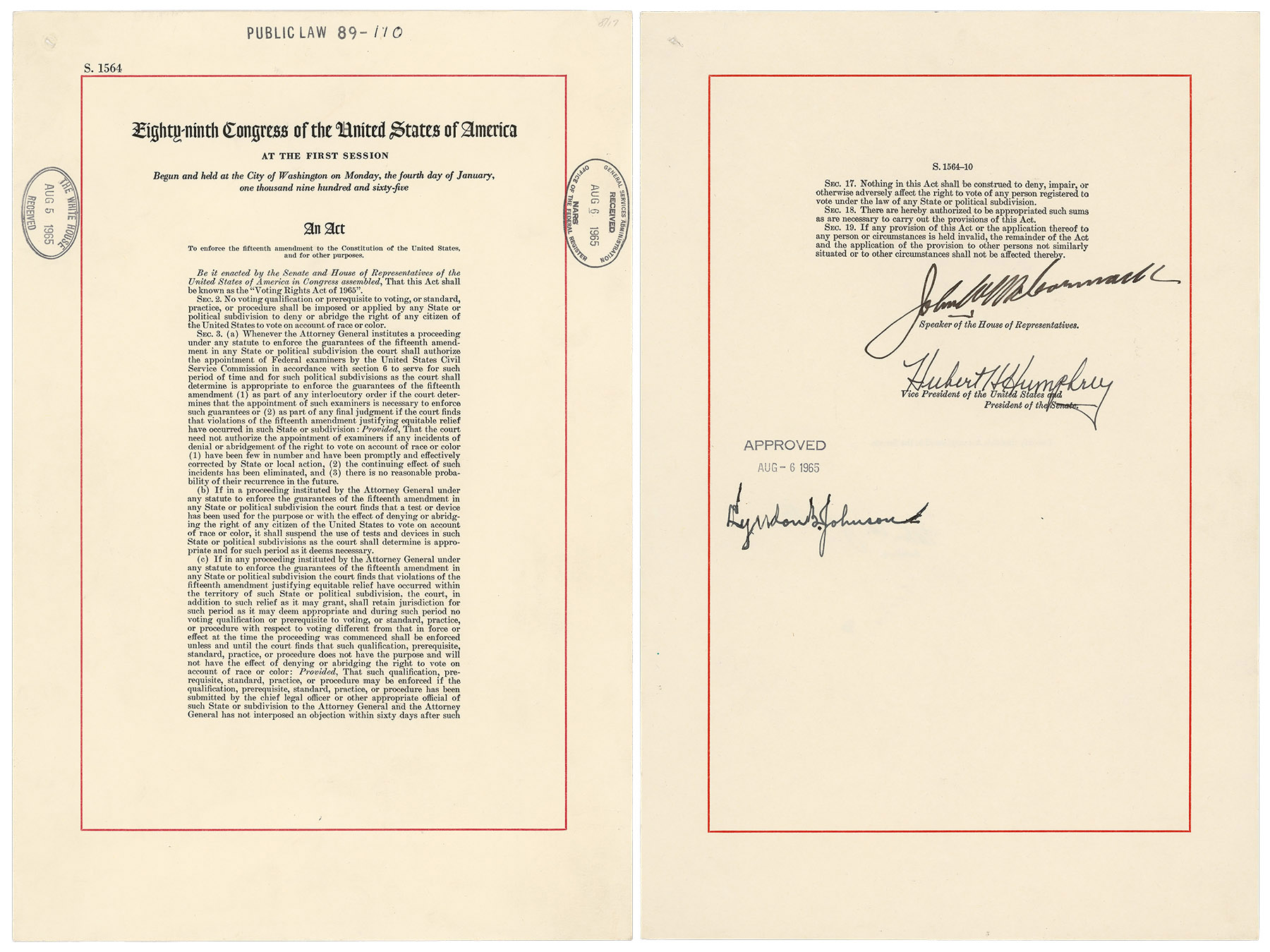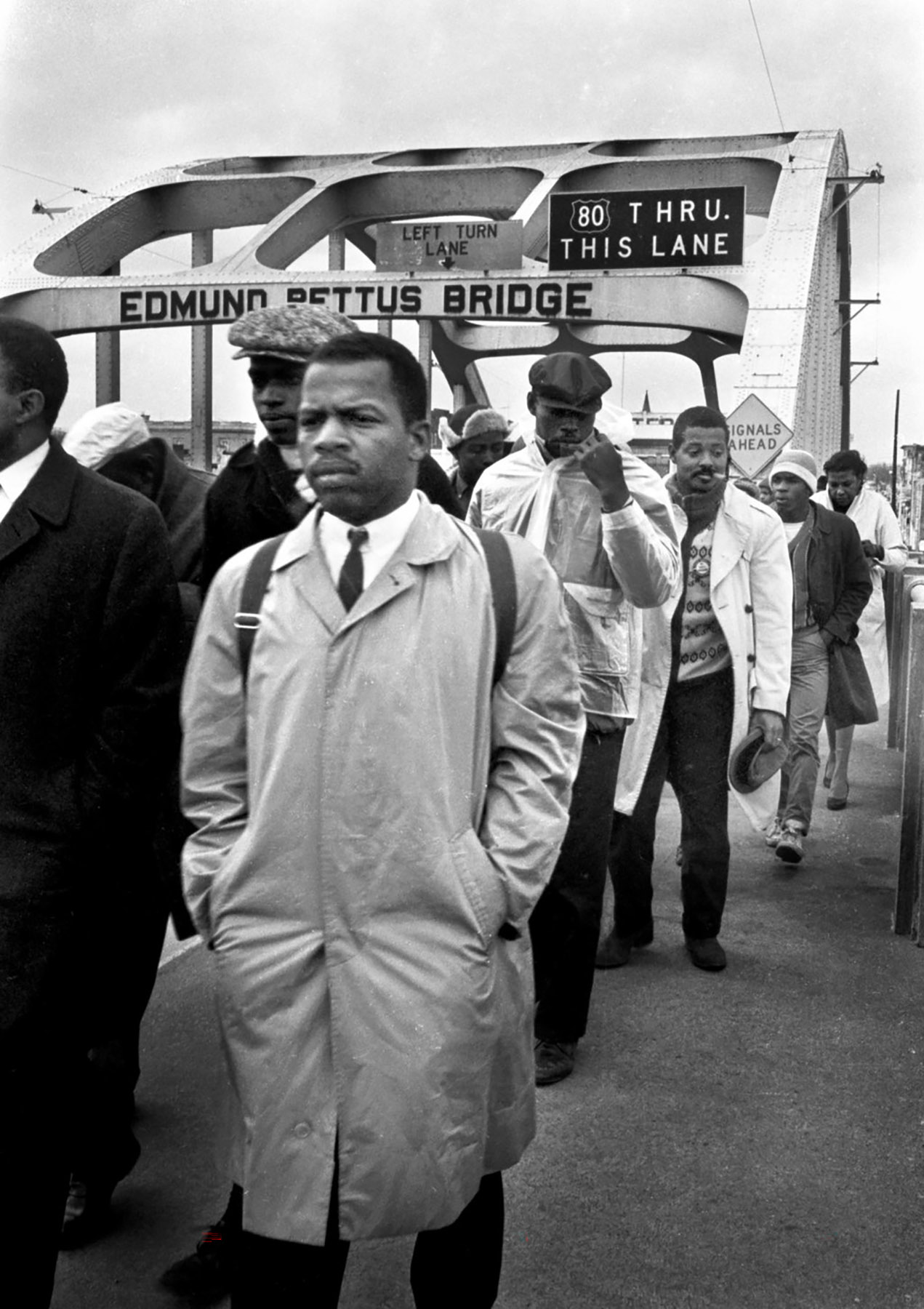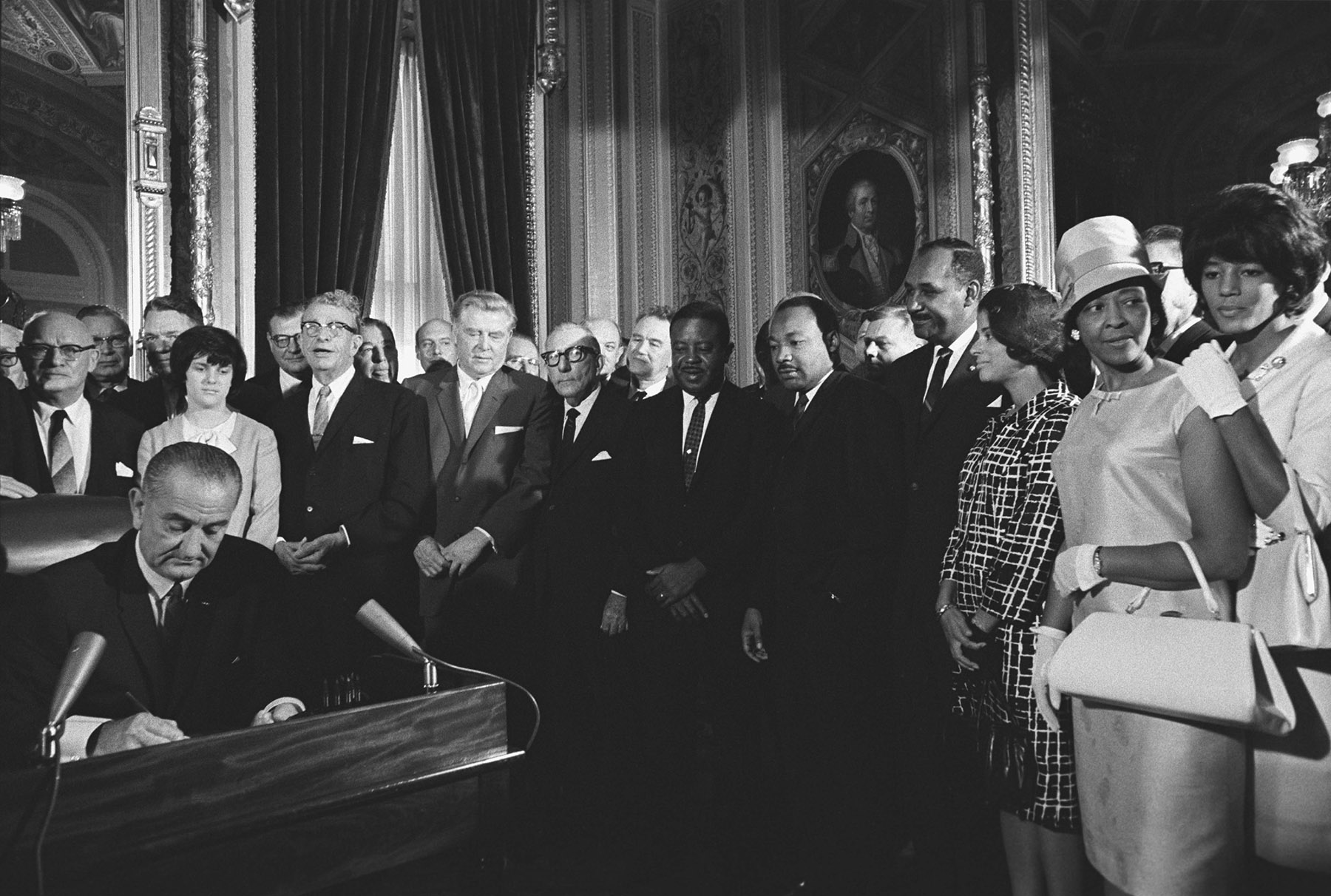To the Polls: 60 Years of the Voting Rights Act
In the 1960s, voting rights were at the forefront of many Americans’ minds. Nearly 100 years had passed since the 15th Amendment outlawed voting restrictions “on account of race, color, or previous condition of servitude.” But threats of violence, literacy tests, and extra fees still prevented many Black voters from exercising their constitutional right at the polls.
On March 7, 1965, a peaceful march led by activists, including future Georgia Congressman John Lewis, was halted by police in Selma, Alabama. The powerful footage of “Bloody Sunday” gained national attention and prompted President Lyndon B. Johnson to introduce voting rights legislation just one week later in “The American Promise” speech to Congress on March 15.

Voting Rights Act of 1965, Pages 1 and Signature, August 6, 1965. General Records of the United States Government
Voting Rights Act of 1965, Pages 1 and Signature, August 6, 1965. General Records of the United States Government
After civil rights activists brought national attention to the issue, Congress enacted the Voting Rights Act “to enforce the fifteenth amendment,” banning race-based voting restrictions and authorizing federal oversight. By 1967, more than half of all eligible Black Americans were registered.

John Lewis During the "Bloody Sunday" March, March 7, 1965. Barack Obama Presidential Library
John Lewis During the "Bloody Sunday" March, March 7, 1965. Barack Obama Presidential Library
Additional Online Resources:
- National Archives News: Voting Rights
- Pieces of History: LBJ and MLK
- The Text Message: Enforcing the Voting Rights Act
- The Unwritten Record: From Selma to Montgomery
- LBJ Presidential Library: Voting Rights Act of 1965

When President Johnson signed the Voting Rights Act into law on August 6, 1965, he was surrounded by many of the people who had paved the way for its passage, including Rosa Parks and Martin Luther King Jr
President Lyndon B. Johnson Signs the Voting Rights Act as Martin Luther King Jr. and Other Civil Rights Leaders Look on, President's Room, U.S. Capitol, Washington, DC, August 6, 1965. Lyndon Baines Johnson Presidential Library and Museum
When President Johnson signed the Voting Rights Act into law on August 6, 1965, he was surrounded by many of the people who had paved the way for its passage, including Rosa Parks and Martin Luther King Jr
President Lyndon B. Johnson Signs the Voting Rights Act as Martin Luther King Jr. and Other Civil Rights Leaders Look on, President's Room, U.S. Capitol, Washington, DC, August 6, 1965. Lyndon Baines Johnson Presidential Library and Museum